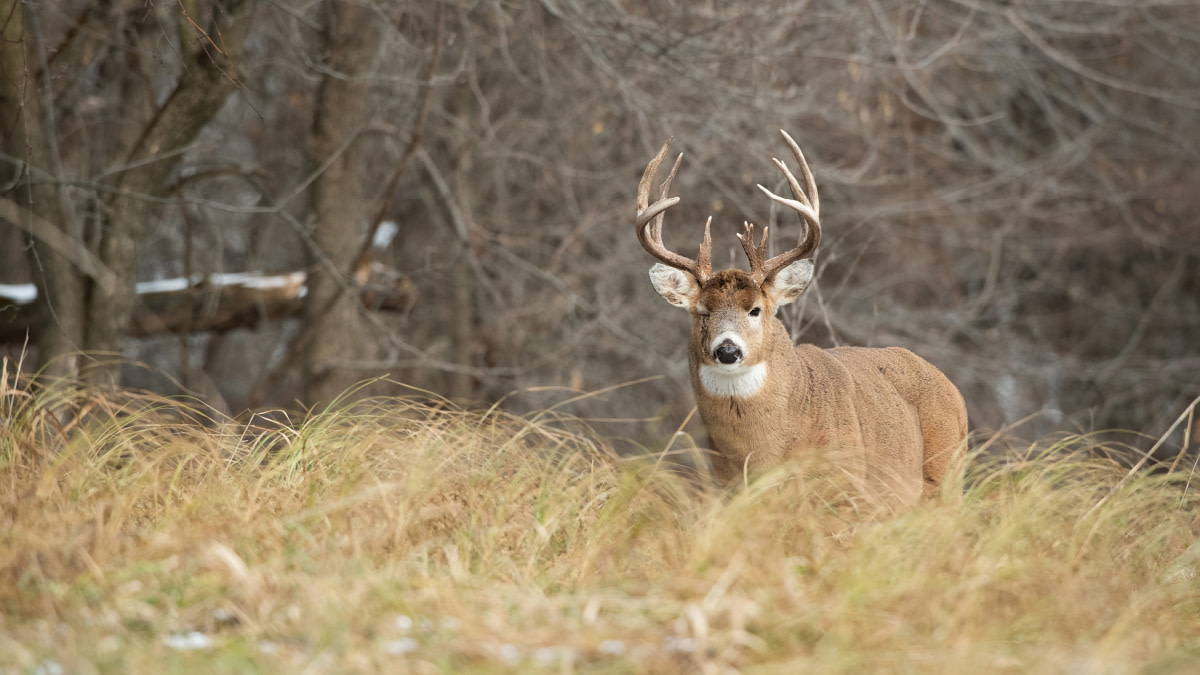
Deer hunters love few things more than pondering the whitetail rut.
Has it started yet? When will it peak? What gets it going? But the most controversial question of all might be whether the moon has anything to do with the rut.
While there’s little to no research that shows a clear correlation between the moon and deer movement, there is plenty of anecdotal evidence. For the sake of argument and out of an abundance of curiosity, let’s examine the most common theories related to the moon’s impact on the rut.
Take it all with a grain of salt.
What Determines the Timing of the Rut?
The rut is less of a mystery than many people make it. Countless studies have shown that the timing of the whitetail breeding season is triggered by photoperiod (the amount of daylight in 24 hours), which means that actual peak breeding is consistent year to year. According to this research, no trendy factors such as the moon, temperature, or barometric pressure change the timing of the breeding bell curve. For most parts of the country, this means that breeding activity will peak around the middle of November.
But while this breeding climax is relatively consistent (with a few notable exceptions), it doesn’t mean that rut-related deer movement that hunters see is predictable. On the contrary—visible daylight movement seems to vacillate from year to year. This is where several moon related theories come in to play.
The 2020 Rutting Moon
One of the most commonly cited theories, originated by Charles Alsheimer and Wayne Laroche, is known as “The Rutting Moon Theory.” The idea here is that the second full moon after the autumn equinox is what kicks rutting activity into gear.
This year the rutting moon falls on October 31. According to this theory, described annually in Deer & Deer Hunting Magazine, the seeking and chasing behavior most hunters associate with the rut would begin around the 28 of October and continue through mid-November. This is right in line with what you’d expect from a deer herd with a mid-November peak breeding date. The thinking goes that when the rutting moon is lined up with the first few weeks of November, it results in superior daylight activity during this already much-anticipated period.
This is what we have in 2020. So, if you’re a believer, the rutting moon this year is exactly what you’re looking for.
The 2020 Illuminating Moon
Another set of theories revolve around the moon’s position in the sky at certain times of the day during the rut. Well-known deer hunting personalities such as John Dudley, Adam Hays, and the Drury Brothers think it has an impact. They don’t necessarily see it as something that triggers breeding, but do believe it affects daylight deer movement.
Both Dudley and the Drury Brothers have described an affinity for periods when the moon is in the sky early in the evening or late in the morning. These positions occur in the days before and after a full moon. Daylight movement supposedly increases when these preferred moon days coincide with the weeks around the rut.
“The moon, in my opinion, exposes the daylight portion of the rut differently each year, depending on how the full moon falls,” Mark Drury said. “That’s why you see the variance in ruts that are intense versus not. If it exposes during the seeking phase [early November], you’ll go, ‘oh man, this was an awesome rut.’ However, if the moon exposes the lockdown [mid-November], you’ll think it’s a terrible rut.”
With this theory and the full moon on October 31, we should see particularly good pre-rut behavior on the evenings leading up to Halloween and exceptional morning activity during the first few days of November.
The 2020 Red Moon
A second moon position-related theory, championed by folks such as Adam Hays, keys in on times when the moon is directly overhead or underfoot. According to this line of thinking, better-than-average movement can be expected on the dates when these overhead/underfoot times coincide with the expected rut periods.
Hays has even described using these “red moon dates,” as he calls them, to help him decide which days to hunt midday. In 2020, these dates point to particularly good activity November 3-7 and November 17-21.
So What?
As I’ve already mentioned, there is little to no research that backs up any of these moon theories.
What is verified by science is the impact of photoperiod and the relatively consistent peak breading dates. For this reason, I still look at the two to three weeks preceding mid-November as my best bet for rutting activity.
But, at the same time, I can’t deny that certain days within that window are better than others and that some of the best deer hunters I know believe the moon is a contributing factor. With that in mind, I can’t 100% rule the moon out of the picture. Call me cautiously curious.
Regardless of the moon, when the calendar flips to November, I’ll be in a tree every day possible. I’d recommend you do the same.
Feature image via Matt Hansen.




